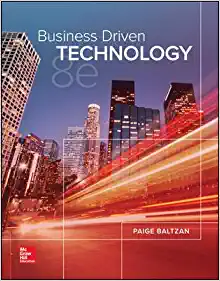Answered step by step
Verified Expert Solution
Question
1 Approved Answer
Consider a scenario where an oil company is operating a refinery in a developing country. For simplicity's sake assume that the refinery's output is consumed
Consider a scenario where an oil company is operating a refinery in a developing country. For simplicity's sake assume that the refinery's output is consumed entirely within the country. A. Assuming decreasing marginal benefit MB to consumers for consumption of refined oil, increasing private cost MC to the oil company, and constant marginal health damages to society MD, draw the graph showing the privately and socially optimal equilibria. Will the firm over or underproduce oil relative to the social optimum? B. Suggest at least two mechanisms the developing country government might try to use to correct for this externality. What might be practical barriers to implementation for either mechanism in the real world? C. Suppose that a team of young environmental and development economists announces that they believe that marginal damages due to oil refinery effluent are much larger than estimated, increasing, and highly nonlinear above a threshold value somewhere in the vicinity of the current and old market equilibria. Draw what this graph might look like. Which of the policy mechanisms we've discussed might you suggest as the preferred means of dealing with this uncertainty, and why? D. Suppose that a rival group of development economists counters that the environmental economists' damage estimates are unrealistically high and the constant MD curve in part (a) is more realistic. Moreover, when one considers the positive external long-term effect that the oil refinery has on local industry, marginal benefit accruing to society from the refinery's benefit may be far in excess of current estimates at all levels of production. Draw what this graph might look like. If such is the case, what policy mechanism might you suggest the country use to control pollution emissions, and why? E. Assume instead that there is a coup and the oil refinery is nationalized. Oil output is now directly determined by the populace that is subject to the marginal damages. Graph how the equilibrium quantity of oil produced might change. What has happened from an economic point of view? Would the country still want to impose an externality-correcting policy? F. Was the movement from privately held firm to nationalized firm in part (e) above Pareto improving? Did it satisfy the Kaldor-Hicks criterion? Explain. Problem 2 (25 points) Two local firms, A and B, are responsible for all of the pollution in Dirty Lake. Currently, firm A emits 8 tons of noxious pollutants into the lake each year and firm B emits 6 tons for a total of 14 tons of pollutants. The EPA's SuperFund has targeted DirtyLake for clean up. Specifically, the EPA wants to reduce the total amount of pollutants in Dirty lake by 10 tons per year, i.e., reduce the amount of pollutants from the current 14 tons down to only 4 tons. The marginal costs of clean up for the two polluters are given respectively by: MCA = 75 + 20XA and MCB = 125 + 30XB where the MCs are the marginal costs of abatement (i.e., of not emitting a ton of pollution) and the Xs are the number of tons of pollutants abated / not emitted per year. Use this information to answer the following questions: A. If the EPA simply orders each polluter to eliminate 5 tons of pollutants per year, what will be the total cost -- for each polluter and in total -- of cleaning up DirtyLake? B. Suppose the EPA were to use an effluents tax approach (a tax on pollution) to clean up the lake. I) At what dollar amount per ton of pollutants should the tax be set? II) How many tons of pollutants would be eliminated by each polluter and at what cleanup cost? What would the total cost of the clean up be (don't include the taxes since they are a transfer within society)? III) How much tax revenue would the EPA collect? C) Suppose that the EPA decides to auction pollution permits, each allowing the holder to emit one ton of pollutants into DirtyLake each year. Because it wants to limit the amount of pollutants to 4 tons, it limits the number of permits to 4. Assume (1) that the auction is blind; that is, each firm bids once and does not know what the other firm bids and (2) no firm emits without a permit. I) What is the most that firms A and B, respectively, would offer for the first permit auctioned off? Who would buy it? II) Do the above analysis for the second, third and fourth permits. How many does each polluter buy? How much pollution does each eliminate? III) What is the cost of the pollution clean up using the permit approach? Exclude the cost of the permits themselves, since these are just transfers within society. How does this compare to the total cost of the emissions tax approach? D) Suppose that, before the permit auction takes place, firm A and firm B convince the EPA that the most equitable way to allocate the permits is to give each of them 2. If the two polluters can bargain costlessly, would this equal allocation be stable, or would it likely be modified? Explain
Step by Step Solution
There are 3 Steps involved in it
Step: 1

Get Instant Access to Expert-Tailored Solutions
See step-by-step solutions with expert insights and AI powered tools for academic success
Step: 2

Step: 3

Ace Your Homework with AI
Get the answers you need in no time with our AI-driven, step-by-step assistance
Get Started


